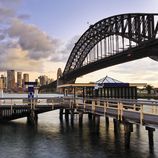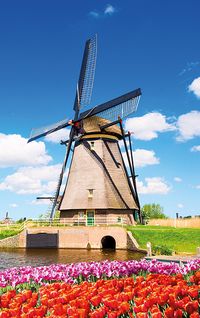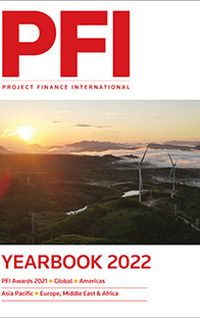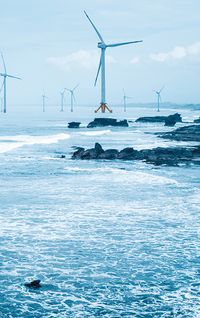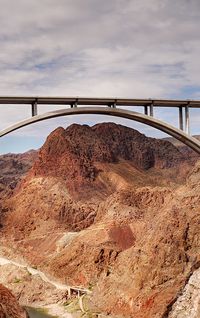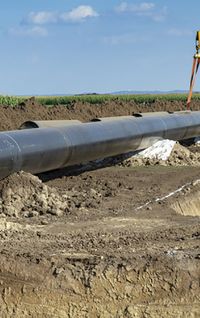In September, a major milestone in the industrialisation of continuous or on-demand electricity from hydrogen produced from renewable energies was reached, with the financial close of CEOG (French Guiana), the world's largest green hydrogen-power project. HDF Energy, the France-headquartered global pioneer in hydrogen power, has started construction on the market’s first baseload renewable energy power plant using hydrogen technology. By Peter Collins.
Following financial close, HDF Energy and its equity partners, infrastructure fund Meridiam and petroleum operator SARA (Rubis Group), broke ground on construction of the Centrale Electrique de l'Ouest Guyanais (CEOG) Renewstable Power Plant in French Guiana. CEOG is the world's first multi-megawatt (128MWh) hydrogen power plant producing stable, continuous and dispatchable electricity, without polluting emissions, and the largest green hydrogen storage facility for intermittent electricity sources. McPhy, the specialist in zero-carbon hydrogen production and distribution equipment, electrolysers and refuelling stations, was selected to equip the project. The scheme should be operational in April 2024.
A consortium of commercial and development banks provided the debt on the US$200m scheme. The project financing for HDF’s €170m CEOG plant saw French lenders play an important role in funding the first-of-its-kind project.
BNP Paribas and Japan's SMBC take the biggest tickets on the 22-year door-to-door €105m debt facility, with €21m each, followed by CIC and BPI with commitments of €16.5m each, and AFD with €5m. EIB provided €25m. Public financing – split between an overseas tax credit and a contribution from ADEME – accounted for €36m of capex, leaving €29m in equity – of which Meridiam provided 60%, SARA, 30% and HDF Energy, 10%. The total amount of capex associated with the supply and installation of the equipment represents an amount of €130m, excluding development costs, financial expenses and taxes.
France's EDF is the offtaker on a classic 25-year power purchase agreement (PPA) allowing it to acquire continuous power and with a capacity contract agreement for supplying power on demand using the hydrogen storage solutions.
The scheme involves 55MWp of installed photovoltaic capacity, 16MW of installed electrolyser capacity, 88MWh of hydrogen storage, 2x1.5MW of fuel cells and more than 35MWh of lithium-ion batteries. Approximately 75% of the solar power is used to produce the green hydrogen, which is then stored under pressure in reservoirs and can be transformed into power via the fuel cells, to supply competitively priced electricity in comparison with the cost of energy produced by the territory’s thermal power plants.
If the full 88MWh were used continuously, it would provide 29.3 hours of power. But the purpose of the scheme is to solve the issue of intermittency in renewables and the solar component, combined with short-term battery storage and longer-term hydrogen storage, has essentially created baseload renewables. The capacity agreement with EDF is for 10MW per day and 3MW per night.
Siemens is the EPC contractor and is providing a two-year performance guarantee. Ballard is providing the fuel cells in collaboration with HDF, whose recent €132m IPO proceeds are to be partially spent on fuel cell production capacity – although this won’t be up and running in time for the Guiana scheme. McPhy is providing the electrolyser, which will convert the electricity produced by the photovoltaic park into renewable hydrogen. At 16MW, it will be one of the largest of its type to-date.
Linklaters advised the lenders while the sponsors’ legal team comprised Willkie Farr & Gallagher, financial adviser Eight Advisory and Marsh on insurance.
"CEOG is the world’s first multi-megawatt hydrogen power plant, and the largest green hydrogen storage of intermittent electricity sources," HDF said in a press release announcing the start of the construction.
Meridiam is the biggest equity investor and lead developer on the scheme, leveraging its experience during the offtake negotiations and EPC procurement.
“There are lots of similarities between CEOG and what we are doing in the energy market more widely as a developer and long-term investor," Julien Touati, partner and corporate development director at Meridiam, told PFI, with the opportunity seen as an excellent fit for the investor and all its emerging markets and power experience.
French Guiana has a real energy issue. It already suffers from electricity supply problems but at the same time has set a very ambitious target for decarbonising its energy mix. It has defined long-term objectives aimed at reducing fossil energy consumption and promoting renewable energies to reduce its environmental footprint and its energy dependency. Historically, polluting and costly solutions resulting in production costs higher than the regulated electricity tariff have been implemented to guarantee electricity supply. Such is the case for thermal power plants or installed diesel generators.
It currently has several thermal power plants with a total installed capacity of 140MW and is dependent on fossil fuels as its main means of power production. Their maintenance and the massive consumption of diesel generates a significant cost over time. As well as providing continuous electricity from renewable energy, CEOG will generate at cheaper prices than the country's diesel plants – diesel power there ranges between US$450 per MWh to US$600/MWh, according to a report by France's energy regulator CRE. It will also avoid the release of 39,000 tonnes of CO2 into the atmosphere and the use of 12 million litres of diesel per year for the next 25 years.
“Even without subsidies or grants we achieved competitiveness with power prices,” Damien Havard, CEO of HDF Energy, told PFI, though in the end sponsors did opt for the ADEME subsidy in order to lower prices even further.
While competitive with diesel, the project – as a pioneer and relying on a still developing hydrogen market – is understandably more expensive than a standard solar and battery scheme. But the sponsors have managed to commercialise what could be a revolutionary moment in renewables technologies.
“The question is ‘are we affordable for the system we are facing?’" said Touati. "The answer is yes and that’s the biggest challenge to address when developing a complex project.”
Having solved the issue of intermittence with the Renewstable structure and financed it with a typical IPP leverage and reputable commercial banks, "we believe we have launched the second era of renewables", Havard told PFI.
"Classical renewable energy solutions have achieved low power prices, but now let’s respond to demand and how power is used," he added.
HDF is not resting on its laurels and has Renewstable projects in Mexico, Barbados, Cyprus, Australia, Indonesia, and New Caledonia, some of them significantly larger than CEOG. For example, the Mexican project, targeted for financial close in 2022, will have 150MW of solar, a 40MW electrolyser and 9MW of fuel cells. Other projects in Barbados, a second scheme in Guiana, Cyprus, Australia, Indonesia and New Caledonia range between 31MW and 160MW of solar.
It has also identified several opportunities representing nearly €2.5bn in cumulative investments for which HDF has initiated discussions. Once the stakeholders have agreed on a location, connection and service, these projects will move into Phase 1. The company expects to convert some of these projects to Phase 1 during 2021.
“CEOG is really the cornerstone of what we’ve been wanting to achieve for several years," said Havard emphasising that the 78% leverage "demonstrates that we are on par with a classic renewables project". He added: "We have made a bankable project at industrial scale."
"This is not a prototype project," emphasised Sylvain Charrier, HDF's vice-president of public affairs, "CEOG was a first of its kind, which allowed us to reach certain technical and financial milestones in order to advance the next projects.”
Costs are expected to come down as the technologies mature: today, the cost of an alkali electrolyser is about US$700,000/MW. This price is expected to decrease significantly in the coming years, with HDF expecting US$300,000/MW by 2030 and less than US$200,000/MW by 2050. The assembly process is still very traditional, and the automation of the process will drive costs down even before considering economies of scale and technological innovation.
The next projects, however, may not benefit from the same situation as CEOG which is being built in an overseas department of France with the same offtaker you'd find for a project in Lyon. Offtaker reliability and creditworthiness – while unlikely to be an issue in Australia – could pose higher levels of risk in some countries.
“Quality of offtaker is certainly an important consideration that will be made for each project on a case-by-case basis," said Havard, while Meridiam's Touati was not too concerned, saying that, as an essential service, “when a power project is reliable and well-functioning, it gets paid”.
Meridiam's presence – doubtless another boon to HDF to have had an experienced French investor and developer alongside – is no guarantee on future schemes either.
“We will explore other similar projects but will be selective on which to pursue. For example, not all the territories for which this solution is relevant (eg, islands in Asia) and where HDF will logically go are eligible for Meridiam funds," said Touati.
All 11 projects in HDF's pipeline, totalling €1.3bn in investments, are in Phase 1 of development, which entails the creation of an SPV, completion of feasibility studies, land signing, environmental studies, power generation approvals, and/or development bank support. These projects comprise three development phases and a construction phase over an overall period of three to five years. At the end of the construction period, an operating phase of between 20 and 25 years will commence. HDF will seek a majority equity partner for each SPV and is targeting a debt contribution of up to 70%–80% for their financing.
The pipeline represents a supply of 80MW of fuel cells, to be manufactured by HDF.
To see the digital version of this report, please click here
To purchase printed copies or a PDF of this report, please email gloria.balbastro@lseg.com

